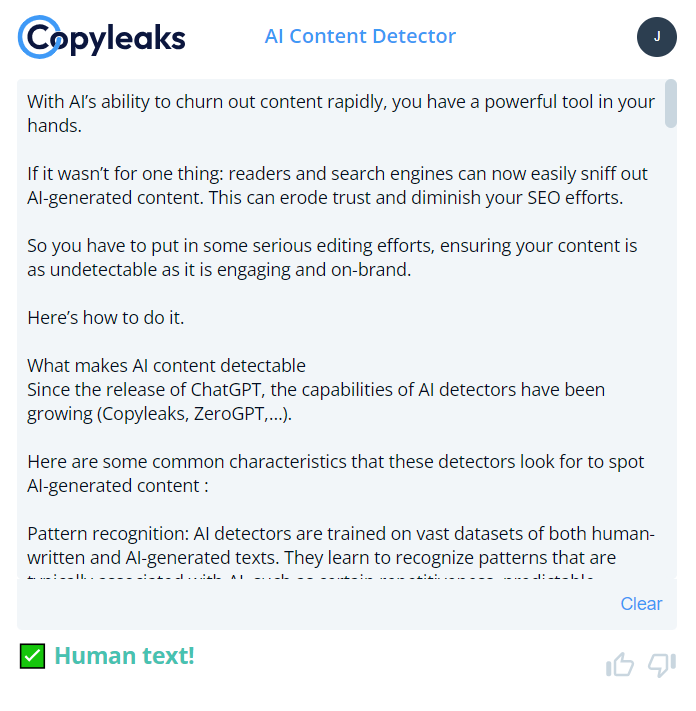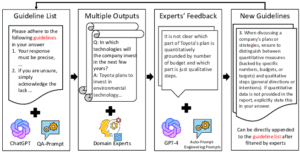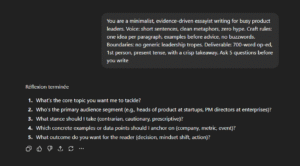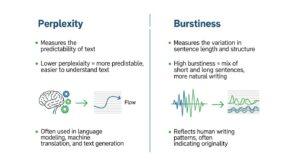With AI’s ability to churn out content rapidly, you have a powerful tool in your hands.
If it wasn’t for one thing: readers and search engines can now easily sniff out AI-generated content. This can erode trust and diminish your SEO efforts.
So you have to put in some serious editing efforts, ensuring your content is as undetectable as it is engaging and on-brand ?
Here’s how to do it.
What makes AI content detectable
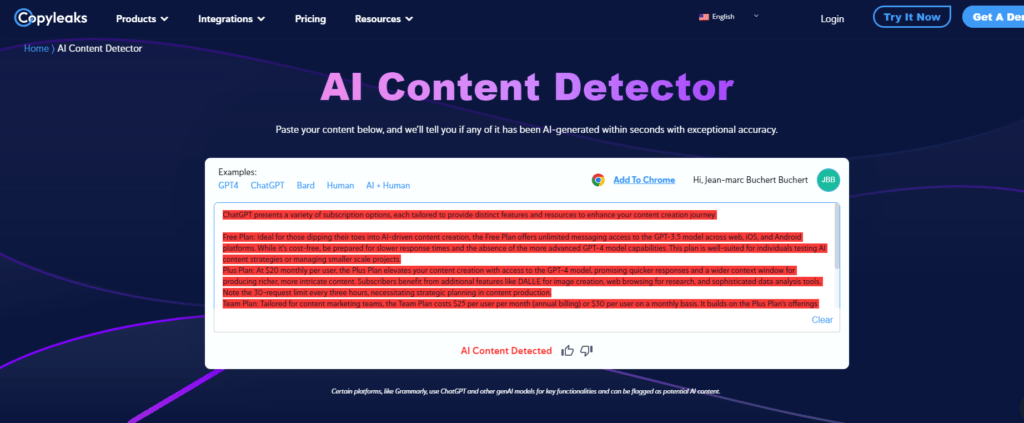
Since the release of ChatGPT, the capabilities of AI detectors have been growing (Copyleaks, ZeroGPT,…).
Here are some common characteristics that these detectors look for to spot AI-generated content :
- Pattern recognition: AI detectors are trained on vast datasets of both human-written and AI-generated texts. They learn to recognize patterns that are typically associated with AI, such as certain repetitiveness, predictable sentence structures, and a lack of natural variability in language use that humans generally exhibit.
- Linguistic nuances: These tools analyze the nuances in language that often distinguish human writing from AI-generated content. For example, AI-generated texts might show a lack of idiomatic expressions, overuse certain phrases, or display an unnatural consistency in tone and style.
- Sentence complexity: AI tends to generate content with more uniform sentence structures. In contrast, human-written text usually varies in sentence length and complexity, exhibiting a natural ‘burstiness’ that is less common in machine-generated content.
- Semantic and syntactic analysis: Detectors often examine the text for semantic anomalies or syntactic patterns that AI models are known to produce. This includes checking for overly formal or complex word choices that may not fit the context or are less likely to be used in everyday language by humans.
- Perplexity and predictability: Some detectors use perplexity metrics, which measure how well a sequence of words fits together based on the statistical model’s expectations. AI-generated texts may have lower perplexity due to their predictable nature.
One note of warning: despite the sophistication of these detection tools, they are not foolproof and can produce both false positives and false negatives.
This is due to the evolving capabilities of AI writing tools, which are continually being refined to mimic human writing styles more closely. As a result, even the best AI detectors might occasionally mislabel human-written content as AI-generated or vice versa.
This doesn’t mean you shouldn’t put effort into humanizing your content. The capabilities of these tools are still growing, so better be sure than sorry.
6 editing steps to make your AI content undetectable
Considering these caveats, you want to make sure your AI content bypass the AI detectors with a 99% chance?
Here are the editing steps you should take :
1. Provide original ideas

Large Language Models (LLMs) draw from a vast, publicly available knowledge base. This means they are often repurposing ideas and facts that are already widely known and easily accessible.
To mitigate the impact of their database, you have to infuse your AI content it with unique, first-hand experiential knowledge. This could be insights you’ve gained from your own professional experiences, original research, or unique perspectives formed through interviews and personal studies.
You can do that in the outline and draft phase of your AI content production. For example, you might use a prompt like :
“Give me an outline about [your subject] based on this first draft of ideas: [your draft].”
2. Teach unique style and tone

The default style of your Large Language Model (LLM) like GPT-4 is highly detectable (zero-shot output).
That’s why you have to customize the voice and style of your AI to mirror your brand or personal voice.
You can craft a prompt that encapsulates all your editorial guidelines. For instance:
“Each time you’re writing something, follow this step-by-step guideline:
- Adopt an engaging, helpful voice, providing actionable and concrete insights, and avoiding buzzwords.
- Use concise, short, and easy-to-understand sentences.
- Put the readers’ goals and concerns first by using pronouns like ‘you’ or ‘your’.
Reply ‘ok’ if that’s clear for you.”
However, due to LLMs’ limited context window, know that they might forget your guidelines from one step to another. You have thus to reinforce these guidelines by providing a writing sample that exemplifies the exact tone and style you expect.
You might use the following prompt to clarify your expectations further:
“Here’s a writing sample to help you determine what kind of writing style and tone we expect. Only reply ‘ok’ if the extract is clear for you. Here’s the extract:”
3. Integrate high-level vocabulary
High-level vocabulary into your AI-generated content can significantly elevate its sophistication, making it less detectable as machine-produced.
For example, if you are writing about a technical subject, using precise terms can clarify specific concepts and show your expertise. Similarly, in creative content, choosing vivid, descriptive words can enhance the imagery and emotional impact of your writing.
However, it’s crucial to balance the use of high-level vocabulary with the clarity and accessibility of your content. The goal is not to confuse your readers with overly complex language but to enrich the text in an informative and understandable way.
4. Personalize tone
AIs are designed to speak in an undetermined and passive voice. And AI detectors are aware of that.
To break the pattern, you might make your tone more personal by addressing your readers directly and using the first person. You can use pronouns like “you” and “your” to focus on the reader’s needs and interests.
For instance, instead of stating, “One can improve their skills with practice,” you might say, “You can improve your skills with practice.”
Ask your AI directly to “adress directly the reader in your writing with “you” and “your” ”.
You might also include personal anecdotes or draw on personal experiences that can make the narrative more vivid and engaging. It doesn’t necessarily mean turning every piece into a personal story, but rather ensuring that your content reflects a human element that AI alone cannot replicate.
Moreover, you can encourage interactions with your readers, whether it’s prompting them to consider a different viewpoint or asking them to engage with content by commenting or sharing.
5. Alter sentence structure
AI-generated content has an undeniable writing signature. So it’s essential to vary the sentence structure to make your text more dynamic and engaging
Here’s how you can actively transform your writing to capture the natural flow of human expression :
- Break up long, monotonous sentences into shorter, crisper ones. This not only makes your content easier to digest but also introduces a rhythm to your writing that keeps readers engaged.
- Try combining shorter sentences into longer, compound structures occasionally.
- Diversify how you start your sentences. AI tends to rely on predictable patterns, such as consistently starting with the subject or an adverb. To humanize your text, start sentences with questions, exclamations, or transitional phrases that lead with conjunctions or prepositions.
- Remove ‘in summary” or “in conclusion” sections which often appear at the end of an AI output, to minimize redundancy.
6. Remove clichés and dubious metaphors

AI loves to produce what I call “bulshit words” and are very fond of metaphors and comparisons.
You’re better off clean up your content with these common occurrences such as :
- “In the realm of “ “In the world of” In an era where” “In a time of”
- “Revolution”, “latest innovation”, “transforming” “game-changer” “breakthrough”, “fast-paced”
- “Unprecedented”, “unparalleled” “magic”
- “unleash”, “unravel”, “harness”, “unlock”
You might also scrutinize any metaphors provided by AI. Replace vague or confusing metaphors with straightforward language that better serves the point you’re trying to convey.
Do AI humanizers work?
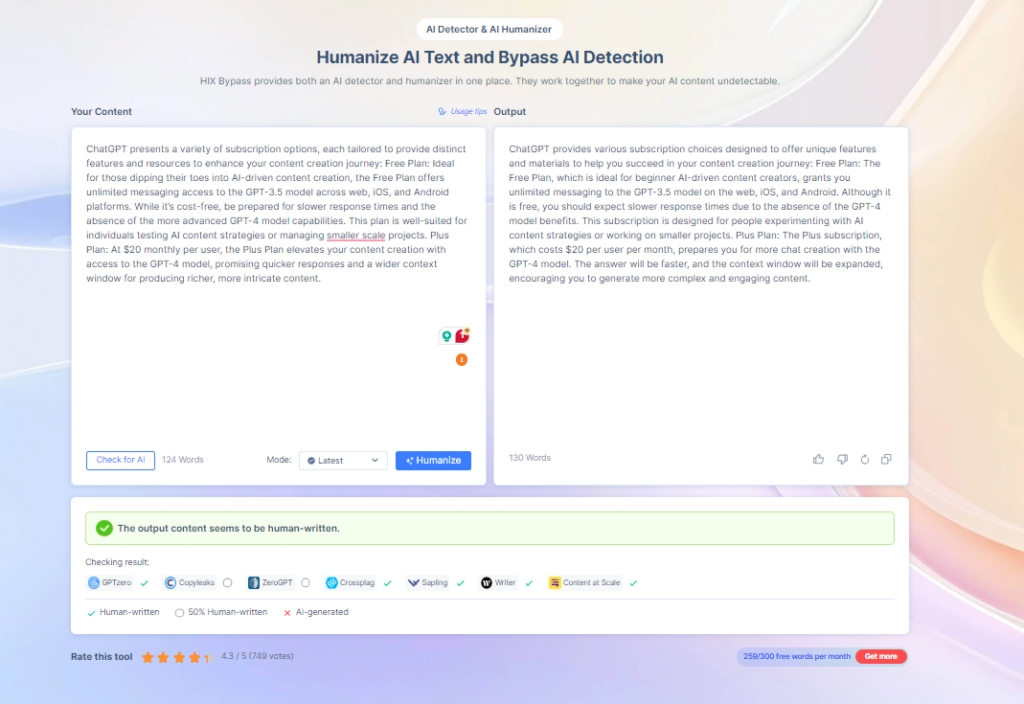
AI humanizers are sophisticated tools designed to add a human touch to AI-generated content, making it sound more natural and engaging.
Here’s how they work :
- Language Modification: AI humanizers analyze the text for robotic or unnatural phrasing and modify it to sound more conversational and less mechanical. This includes adjusting syntax, using contractions, and incorporating colloquial language that would typically be used in human conversation.
- Syntax and Structure Changes: These tools often rearrange sentences and vary their structure to break up the monotonous and predictable patterns typical of machine-generated text. By introducing variability in sentence length and structure, AI humanizers make the content appear as if it were crafted by a human.
- Personalization: Adding personal anecdotes, subjective opinions, and emotional undertones can significantly humanize a piece of content. AI humanizers facilitate this by suggesting or making edits that inject personal elements into the text, thus enhancing authenticity and engagemen.
- Plagiarism and Originality: Ensuring that the content is not only unique but also free from plagiarism is another crucial function of AI humanizers. They check the content against existing materials online to guarantee originality.
Do they really work ?
While some AI humanizers claim high success rates in evading detection, there are significant challenges.
For example, tests have shown that while some basic AI detectors like HuggingFace’s tool might be fooled by humanized text, more advanced systems such as Winston AI can still reliably identify content as AI-generated, despite the application of humanizing techniques.
AI humanizers especially struggle against more robust, state-of-the-art systems that leverage advanced techniques to analyze text.
So they might offer a temporary solution in some contexts, but as AI detection technologies continue to evolve, their effectiveness could diminish.
The best tools to make your AI undetectable
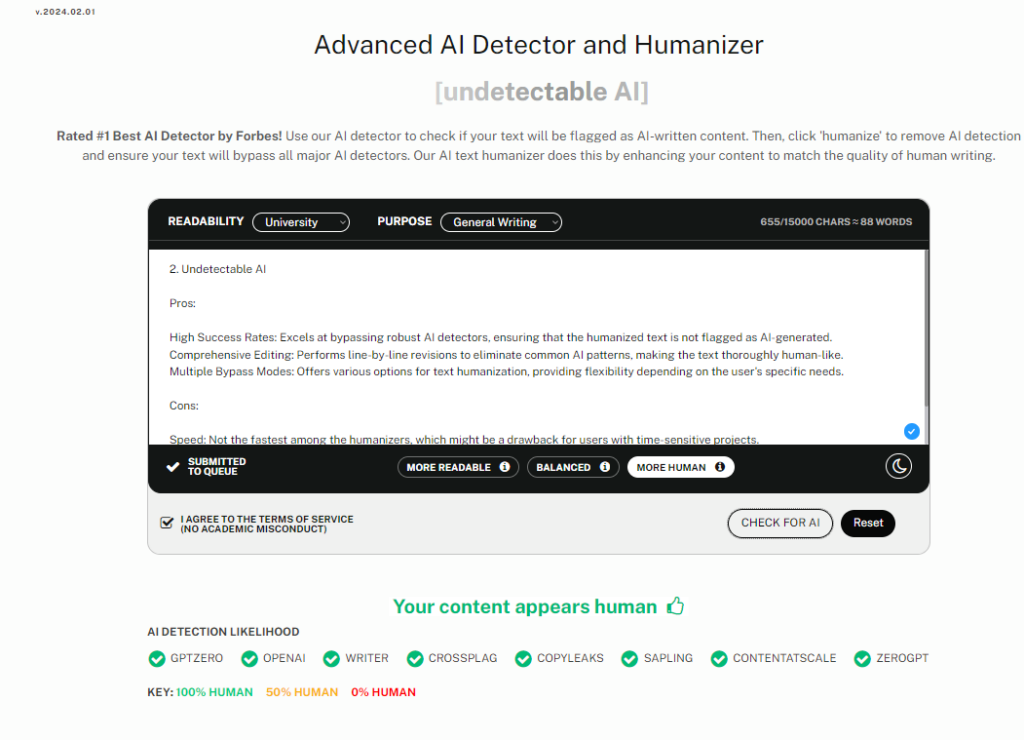
There are a variety of AI humanizers out there with diverse capabilities and features.
Here are the detailed pros and cons for each of the most common ones:
1. Undetectable AI
Pros:
- High Success Rates: Excels at bypassing robust AI detectors, ensuring that the humanized text is not flagged as AI-generated.
- Comprehensive Editing: Performs line-by-line revisions to eliminate common AI patterns, making the text thoroughly human-like.
- Multiple Bypass Modes: Offers various options for text humanization, providing flexibility depending on the user’s specific needs.
Cons:
- Speed: Not the fastest among the humanizers, which might be a drawback for users with time-sensitive projects.
- Limited Tone Adjustment: Does not allow users to modify the output tone and style, which may not suit all types of content.
2. HIX Bypass
Pros:
- Speed and Efficiency: HIX Bypass is highly regarded for its rapid processing time, making it a strong choice for quickly humanizing large volumes of content.
- User-Friendly Interface: The tool is designed to be intuitive, allowing for easy navigation and operation without a steep learning curve.
- Secure Data Encryption: Ensures that all data processed through the tool is securely encrypted, protecting user information.
Cons:
- Limited Customization: Lacks advanced options for customizing the output style, which may be a drawback for users needing specific stylistic adjustments.
- Input Limit on Free Plan: Users on the free plan face limitations on the amount of text they can process, necessitating an upgrade for more extensive use.
3. StealthWriter
Pros:
- Variety of Outputs: Capable of generating multiple iterations of humanized text, allowing users to choose the best option for their needs.
- Real-Time Editing: Integrates tools for immediate content modification, enhancing the flexibility of content creation.
- Advanced Evasion Techniques: Features sophisticated methods to evade AI detection, increasing the reliability of the content in sensitive uses.
Cons:
- High Cost: One of the more expensive options available, which might be prohibitive for some users.
- Word Limitations: Imposes strict limits on the amount of text that can be processed per input, which could hinder large-scale operations.
4. BypassAI
Pros:
- Preservation of Meaning: Effectively maintains the original meaning of the text, ideal for nuanced or complex content requirements.
- Plagiarism-Free Output: Ensures that all humanized content can pass plagiarism checks, adding an extra layer of security for academic or professional work .
- SEO Enhancement: Designed to produce content that is favorable for SEO, helping to improve search engine rankings.
Cons:
- Limited Editing Options: Offers fewer features for editing and customizing the text compared to other tools, which might affect content personalization.
- Variable Word Count: The final output may have a word count that differs from the input, which could complicate content planning.
Now you have everything in your hands to bypass AI content detections. Time to put the efforts into it !

